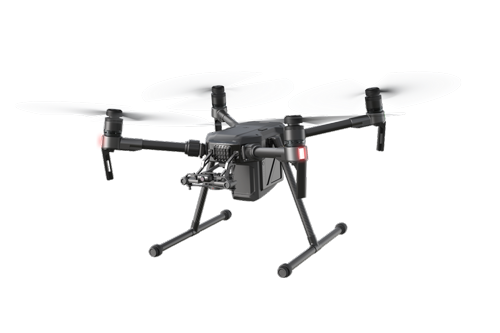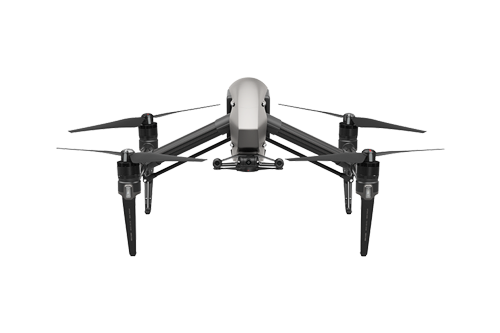DJI Drone product
Best DJI Drones - review article, September 2019
Donec pede justo, fringilla vel, aliquet nec, vulputate eget, arcu. In enim justo, rhoncus ut, imperdiet a, venenatis vitae, justo. Nullam dictum felis eu pede mollis pretium. Integer tincidunt. Cras dapibus. Vivamus elementum semper nisi.
Maecenas tempus, tellus eget mentum rhoncus, sem quam semper libero, sit amet adipiscing sem.
Nulla consequat massa quis enim. Donec pede justo, fringilla vel, aliquet nec, vulputate eget, arcu. In enim justo, rhoncus ut, imperdiet a, venenatis vitae, justo. Nullam dictum felis eu pede mollis pretium. Integer tincidunt. Cras dapibus. Vivamus elementum semper nisi.
DJI Drone product
Pricing package
Popular
DJI Drone product
Pricing package
Premium
The drone takes off, hovering a few feet off the ground. I guide it up to about 12 feet with the throttle on the remote control. Then my three year old son takes over. He taps the screen on an iPad running our piloting app. The drone, a DJI Phantom 4, begins to ascend, heading towards an abandoned grainery. My son happily taps away at the screen, shifting the drone here and there. You wouldn’t notice how frantically he’s tapping from the footage he captured, which is buttery smooth.
Eventually he taps on tree. The Phantom 4 cruises towards it, adjusting slightly to avoid the obstacle. The end result is a dramatic shot, with the drone splitting the difference between two trees, sunset shining on their outstretched branches, passing far closer than I would have felt comfortable with if I was the one in control.
Before the Phantom 4, the best a camera drone could offer was the ability to follow your GPS signal. It works well enough, but has serious limitations. In practice it’s a bit like playing Marco Polo. The drone has a general sense of where you are, but can’t actually see you or the world around it. With just GPS to rely on, drones struggled to adjust for sudden changes in direction or speed, to keep subjects in frame when in close range — and of course, to avoid obstacles like trees, lampposts, and ski lifts.
Contents
DJI Aeropix Phantom Pro

I spent the last few days putting the Phantom 4 through its paces, spending most of my time on the brand new fully autonomous features. It took me a while to get up the courage to fly it full throttle at a wall, and I felt physically sick with fear when I did, but the unit never failed to sense a crash and come to a halt. It picked out brick walls, trees, even chain link fences. Along with obstacle avoidance, the Phantom 4 can be flown simply by tapping on your screen, as my son did. And it can use its computer vision to identify a specific person and follow them, keeping the subject of your film perfectly in frame.
DJI’s Phantom has been our favorite model of drone for the last few years, but this latest version doesn’t merely hold onto the mantle as the best unit you can buy. By adding computer vision and fully autonomous capabilities, the Phantom 4 has dramatically raised the bar on what is possible with a consumer caliber camera drone, both for complete amateurs who want to start flying and for professionals who are crafting complex and dangerous shots.
DJI claims the Phantom 4 is five times more stable than its predecessor, and in our testing it delivered incredibly smooth footage. While hovering it never had an issue holding its exact position to within an inch or two, even in moderate winds. The extra stability come courtesy of an additional IMU, and double the number of downward facing cameras and sonar sensors, which the Phantom uses for its visual positioning system. When executing an automatic return to its home position the craft always landed within a few inches of its takeoff position.
The Phantom 4 uses the same remote controller and Lightbridge video downlink technology as the Phantom 3. In our testing it never lost connection and the video stream was extremely clear and free of lag. I don’t have an expert eye for film, but according to our video team the footage from the Phantom 4 was a big improvement. It looked more “raw” — a higher dynamic range, less digital sharpening, and less saturation — all perks that give you more flexibility when editing and coloring the footage later on.
Total Score
Battery
Max speed
Weight
- Great autonomous features
- Reliable and powerful flight
- Terrific camera and connectivity
- Expensive
- Only comes with one battery
DJI Matrice 200 Series V2

I spent the last few days putting the Phantom 4 through its paces, spending most of my time on the brand new fully autonomous features. It took me a while to get up the courage to fly it full throttle at a wall, and I felt physically sick with fear when I did, but the unit never failed to sense a crash and come to a halt. It picked out brick walls, trees, even chain link fences. Along with obstacle avoidance, the Phantom 4 can be flown simply by tapping on your screen, as my son did. And it can use its computer vision to identify a specific person and follow them, keeping the subject of your film perfectly in frame.
DJI’s Phantom has been our favorite model of drone for the last few years, but this latest version doesn’t merely hold onto the mantle as the best unit you can buy. By adding computer vision and fully autonomous capabilities, the Phantom 4 has dramatically raised the bar on what is possible with a consumer caliber camera drone, both for complete amateurs who want to start flying and for professionals who are crafting complex and dangerous shots.
DJI claims the Phantom 4 is five times more stable than its predecessor, and in our testing it delivered incredibly smooth footage. While hovering it never had an issue holding its exact position to within an inch or two, even in moderate winds. The extra stability come courtesy of an additional IMU, and double the number of downward facing cameras and sonar sensors, which the Phantom uses for its visual positioning system. When executing an automatic return to its home position the craft always landed within a few inches of its takeoff position.
The Phantom 4 uses the same remote controller and Lightbridge video downlink technology as the Phantom 3. In our testing it never lost connection and the video stream was extremely clear and free of lag. I don’t have an expert eye for film, but according to our video team the footage from the Phantom 4 was a big improvement. It looked more “raw” — a higher dynamic range, less digital sharpening, and less saturation — all perks that give you more flexibility when editing and coloring the footage later on.
Total Score
Battery
Max speed
Weight
- Great autonomous features
- Reliable and powerful flight
- Terrific camera and connectivity
- Expensive
- Only comes with one battery
DJI Inspire 2

I spent the last few days putting the Phantom 4 through its paces, spending most of my time on the brand new fully autonomous features. It took me a while to get up the courage to fly it full throttle at a wall, and I felt physically sick with fear when I did, but the unit never failed to sense a crash and come to a halt. It picked out brick walls, trees, even chain link fences. Along with obstacle avoidance, the Phantom 4 can be flown simply by tapping on your screen, as my son did. And it can use its computer vision to identify a specific person and follow them, keeping the subject of your film perfectly in frame.
DJI’s Phantom has been our favorite model of drone for the last few years, but this latest version doesn’t merely hold onto the mantle as the best unit you can buy. By adding computer vision and fully autonomous capabilities, the Phantom 4 has dramatically raised the bar on what is possible with a consumer caliber camera drone, both for complete amateurs who want to start flying and for professionals who are crafting complex and dangerous shots.
DJI claims the Phantom 4 is five times more stable than its predecessor, and in our testing it delivered incredibly smooth footage. While hovering it never had an issue holding its exact position to within an inch or two, even in moderate winds. The extra stability come courtesy of an additional IMU, and double the number of downward facing cameras and sonar sensors, which the Phantom uses for its visual positioning system. When executing an automatic return to its home position the craft always landed within a few inches of its takeoff position.
The Phantom 4 uses the same remote controller and Lightbridge video downlink technology as the Phantom 3. In our testing it never lost connection and the video stream was extremely clear and free of lag. I don’t have an expert eye for film, but according to our video team the footage from the Phantom 4 was a big improvement. It looked more “raw” — a higher dynamic range, less digital sharpening, and less saturation — all perks that give you more flexibility when editing and coloring the footage later on.
Total Score
Battery
Max speed
Weight
- Great autonomous features
- Reliable and powerful flight
- Terrific camera and connectivity
- Expensive
- Only comes with one battery
Conclusion
The Phantom 4 uses the same remote controller and Lightbridge video downlink technology as the Phantom 3. In our testing it never lost connection and the video stream was extremely clear and free of lag. I don’t have an expert eye for film, but according to our video team the footage from the Phantom 4 was a big improvement. It looked more “raw” — a higher dynamic range, less digital sharpening, and less saturation — all perks that give you more flexibility when editing and coloring the footage later on.










